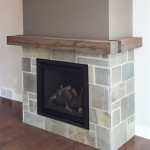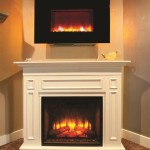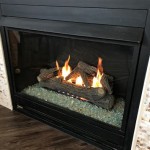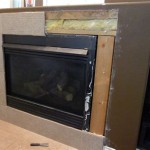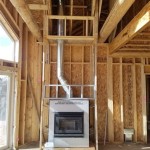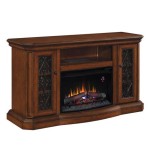Best Fireplace Wood Stove Inserts: A Comprehensive Guide
A fireplace wood stove insert offers an efficient and aesthetically pleasing solution for heating homes and reducing reliance on conventional heating systems. These inserts are designed to fit directly into existing fireplaces, transforming them from decorative features into powerful heating appliances. Selecting the best wood stove insert requires careful consideration of factors such as heating capacity, efficiency, safety features, and installation requirements. This article provides a comprehensive guide to understanding and choosing the optimal wood stove insert for individual needs.
Wood stove inserts enhance the function of a traditional fireplace by creating a closed combustion system. This enclosed design allows for more controlled airflow, resulting in a more complete and efficient burn compared to an open fireplace. This improved combustion reduces the amount of smoke and unburned fuel released into the atmosphere, making wood stove inserts a more environmentally friendly heating option. Furthermore, the closed system allows for greater heat retention, distributing warmth more evenly and effectively throughout the living space.
The market offers a diverse range of wood stove inserts, each with its own set of features and capabilities. Evaluating these options based on specific needs and priorities is essential for ensuring optimal performance and satisfaction. Detailed examination of heating capacity, burn time, emissions standards, and installation complexities will facilitate an informed decision.
Determining Appropriate Heating Capacity
Heating capacity is a crucial factor in selecting a wood stove insert. It refers to the amount of heat the insert can generate, typically measured in British Thermal Units (BTUs). Determining the appropriate BTU output for a given space requires considering several variables, including the size of the area to be heated, the climate, and the insulation levels of the home. A properly sized insert will efficiently heat the intended space without overheating or struggling to maintain a comfortable temperature.
Oversizing a wood stove insert can lead to uncomfortable overheating and inefficient operation. Burning the unit at a lower setting than intended can result in incomplete combustion, increased creosote buildup in the chimney, and wasted fuel. Conversely, an undersized insert will struggle to adequately heat the space, forcing it to operate at maximum capacity, potentially shortening its lifespan and consuming excessive fuel.
To accurately determine the required heating capacity, calculating the square footage of the area to be heated is essential. As a general guideline, a well-insulated home in a moderate climate might require approximately 20 BTUs per square foot. However, homes in colder climates or with poor insulation may require significantly higher BTU outputs. Consulting with a qualified HVAC professional or wood stove dealer is recommended to assess the specific heating needs of the home and select an insert with the appropriate BTU rating.
It is also important to consider the layout of the home. Open floor plans generally benefit from a central insert with sufficient heating capacity. Homes with multiple floors or segmented rooms may require additional heating sources to ensure even temperature distribution throughout the entire living space. A well-planned heating strategy that incorporates the wood stove insert with other heating appliances can optimize comfort and efficiency.
Evaluating Efficiency and Emissions Standards
The efficiency of a wood stove insert is a key indicator of its ability to convert wood fuel into usable heat. A more efficient insert will extract more heat from each log, resulting in lower fuel consumption and reduced heating costs. Efficiency is typically expressed as a percentage, with higher percentages indicating greater efficiency. Wood stove inserts with efficiencies of 75% or higher are generally considered to be highly efficient.
In addition to efficiency, emissions standards are an important consideration, both for environmental reasons and to comply with local regulations. The Environmental Protection Agency (EPA) regulates wood stove emissions to minimize air pollution. EPA-certified wood stove inserts are designed to burn wood more cleanly, reducing the amount of particulate matter released into the atmosphere. Choosing an EPA-certified insert ensures compliance with emissions standards and contributes to cleaner air quality.
Modern wood stove inserts often incorporate advanced combustion technologies, such as catalytic combustors or secondary combustion systems, to improve efficiency and reduce emissions. Catalytic combustors use a coated honeycomb-shaped structure to ignite and burn unburned gases and particles, further reducing emissions. Secondary combustion systems introduce preheated air into the firebox to ignite these gases, creating a cleaner and more efficient burn. These technologies can significantly improve the overall performance and environmental impact of the wood stove insert.
Comparing the efficiency and emissions ratings of different wood stove inserts requires careful attention to detail. Some manufacturers may use different testing methods or report inflated figures. It is crucial to rely on independent testing and certifications, such as those provided by the EPA, to ensure accurate and reliable information. Consulting with a knowledgeable wood stove dealer can also provide valuable insights into the real-world performance of different models.
Understanding Installation and Safety Considerations
Proper installation is critical for the safe and efficient operation of a wood stove insert. Incorrect installation can lead to serious hazards, including chimney fires, carbon monoxide poisoning, and property damage. It is strongly recommended to have a qualified and certified professional install the wood stove insert to ensure compliance with local building codes and safety regulations.
Before installing a wood stove insert, the existing fireplace and chimney must be thoroughly inspected to ensure they are in good condition and capable of handling the increased heat and exhaust from the insert. The chimney may need to be lined with a stainless-steel liner to protect it from corrosion and creosote buildup. The hearth must also be adequately sized and constructed of non-combustible materials to protect the surrounding floor from heat and sparks.
Clearances to combustible materials are another important safety consideration. Wood stove inserts generate significant heat, and it is essential to maintain adequate clearances between the insert and any nearby walls, furniture, or other combustible materials. These clearances are typically specified by the manufacturer and must be strictly adhered to. Installing heat shields can help to reduce clearances and protect combustible materials.
Carbon monoxide detectors are essential safety devices for any home with a wood stove insert. Carbon monoxide is a colorless, odorless gas that can be produced during incomplete combustion. Installing carbon monoxide detectors near sleeping areas can provide early warning of dangerous levels of carbon monoxide and potentially save lives. Regular maintenance and inspection of the wood stove insert and chimney are also crucial for ensuring safe and efficient operation. This includes cleaning the chimney regularly to remove creosote buildup and inspecting the insert for any signs of damage or wear. Following the manufacturer's instructions for operation and maintenance will help to ensure the long-term safety and performance of the wood stove insert.

The Best Wood Burning Fireplace Inserts Or Stoves Ecohome

Fireplace Inserts Gas Wood Pellet Electric Best Fire Hearth Patio

Benefits Of Installing A Wood Burning Fireplace Insert

What S Best A Fireplace Stove Or Insert We Love Fire

Why A Wood Burning Fireplace Insert Bethesda Md Service

The Best Wood Burning Fireplace Inserts Or Stoves Ecohome

Best Fireplace Inserts In 2024

Comparing Fireplace Inserts What S Best For You Forge Flame

Ventis Hei240 Wood Burning Insert Rockford Chimney

The Best Wood Burning Fireplace Inserts Of 2024 Picks From Bob Vila
Related Posts


